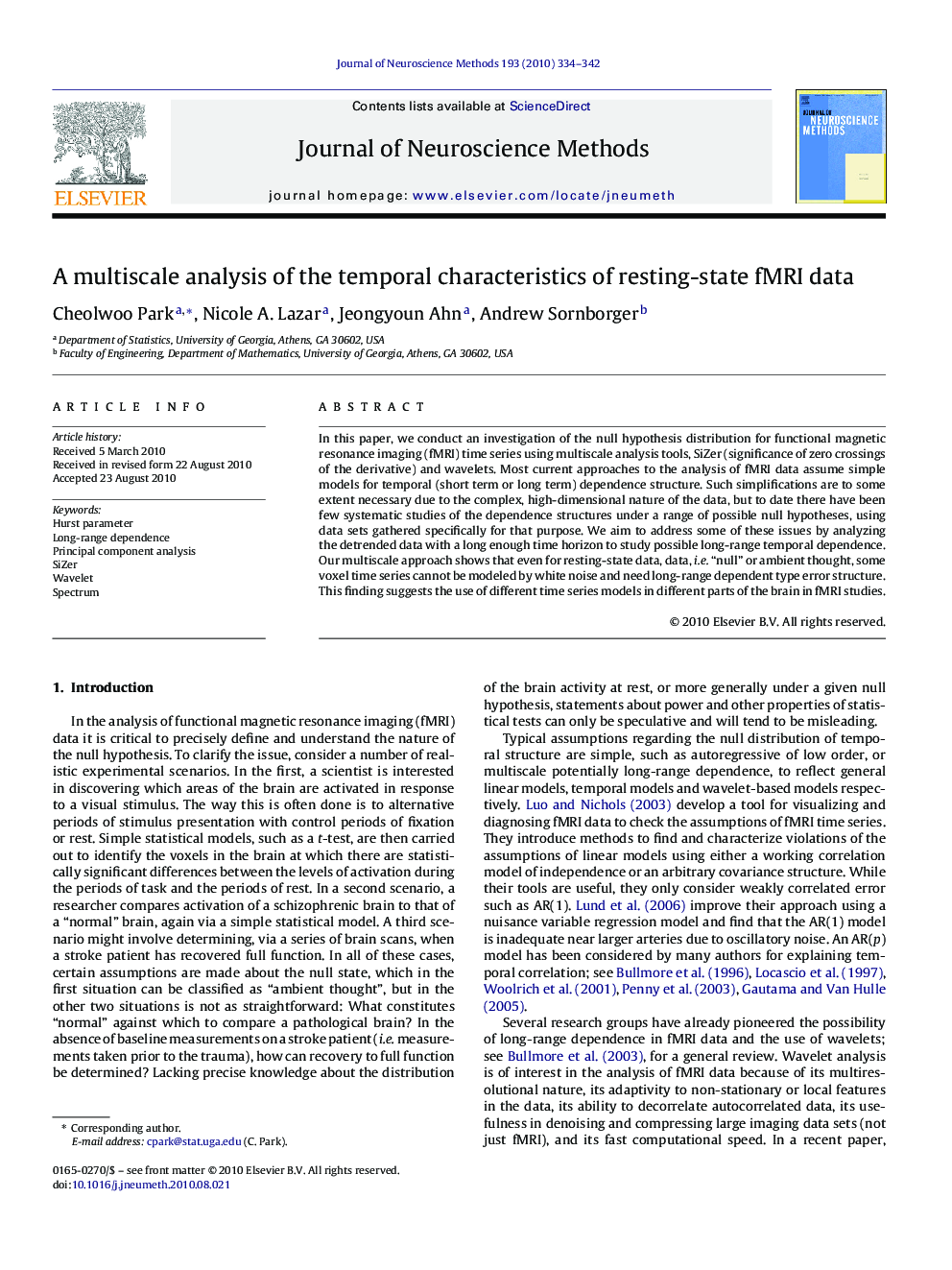| Article ID | Journal | Published Year | Pages | File Type |
|---|---|---|---|---|
| 6269925 | Journal of Neuroscience Methods | 2010 | 9 Pages |
In this paper, we conduct an investigation of the null hypothesis distribution for functional magnetic resonance imaging (fMRI) time series using multiscale analysis tools, SiZer (significance of zero crossings of the derivative) and wavelets. Most current approaches to the analysis of fMRI data assume simple models for temporal (short term or long term) dependence structure. Such simplifications are to some extent necessary due to the complex, high-dimensional nature of the data, but to date there have been few systematic studies of the dependence structures under a range of possible null hypotheses, using data sets gathered specifically for that purpose. We aim to address some of these issues by analyzing the detrended data with a long enough time horizon to study possible long-range temporal dependence. Our multiscale approach shows that even for resting-state data, data, i.e. “null” or ambient thought, some voxel time series cannot be modeled by white noise and need long-range dependent type error structure. This finding suggests the use of different time series models in different parts of the brain in fMRI studies.
Research highlightsⶠOur focus is on the understanding of the null hypothesis in fMRI time series. ⶠWe consider a wide range of dependence structures. ⶠWe study the temporal structure using multiscale tools, SiZer and wavelets.
